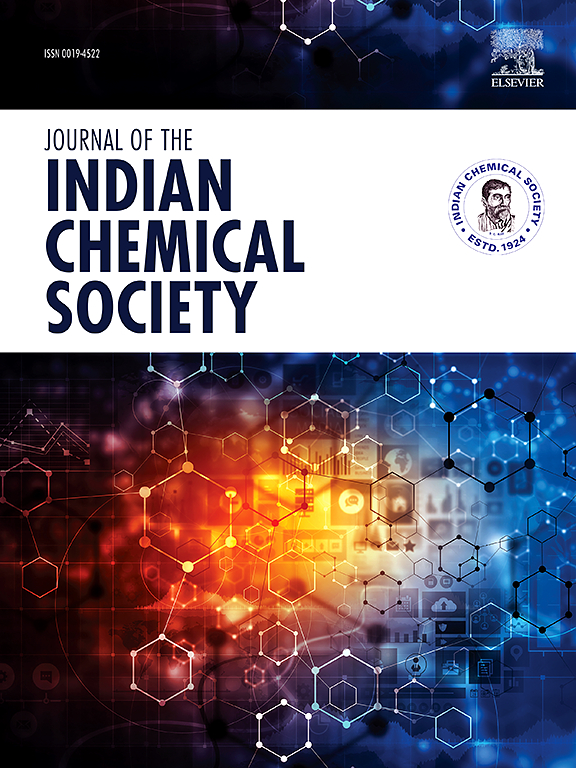Charge transport and optoelectronic properties in polycyclic Hetero[8]circulenes: A computational study
IF 3.2
4区 化学
Q2 CHEMISTRY, MULTIDISCIPLINARY
引用次数: 0
Abstract
Heterocirculenes have emerged as promising candidates for novel materials due to their unique molecular structures and intriguing electronic properties. This work's main objective is to assess hetero[8]circulenes' charge transport and optoelectronic characteristics. The comprehensive analyses of all the hetero[8]circulenes are executed by using Density functional theory (DFT) and Time-Dependent Density functional theory (TD-DFT). Molecular Orbitals Pictures (MOPs) i.e. Lowest unoccupied molecular orbital (LUMO) and Highest occupied molecular orbital (HOMO), Electron affinities (EA), Hole Extraction Potential (HEP), Ionization potential (IP), Electron Extraction Potential (EEP), NICS (0), Density of states (DOS), Molecular Electrostatic Potential maps (MEP), and Reorganization energies (Z), of all the studied molecules were examined. The hole and electron transfer integrals, and rate constant for all the molecule are also investigated. The Thiophene and Selenophene containing heterocirculenes show the best charge transport properties, and also, HS3 shows the lowest ZH of 36 meV. The difference between hole and electron Z is less than 50 meV, so these are also appropriate as ambipolar materials. The findings of the study indicate the potential utility of Heterocirculenes as organic materials for optoelectronic applications.

求助全文
约1分钟内获得全文
求助全文
来源期刊
CiteScore
3.50
自引率
7.70%
发文量
492
审稿时长
3-8 weeks
期刊介绍:
The Journal of the Indian Chemical Society publishes original, fundamental, theorical, experimental research work of highest quality in all areas of chemistry, biochemistry, medicinal chemistry, electrochemistry, agrochemistry, chemical engineering and technology, food chemistry, environmental chemistry, etc.

 求助内容:
求助内容: 应助结果提醒方式:
应助结果提醒方式:


